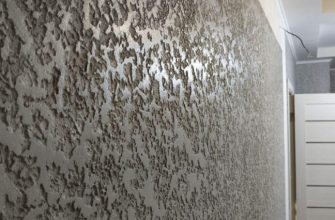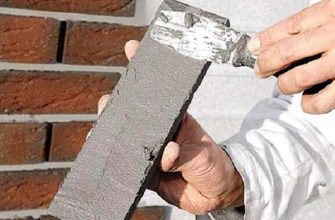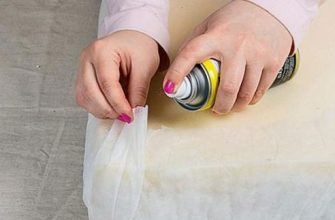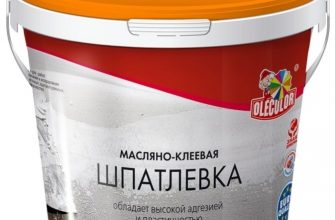Repair and construction work, as a rule, is carried out in the warm season. It is difficult to mount anything, let alone finish in winter, since the characteristics of many materials change under the influence of low temperatures.
Is it allowed to sheathe the house in winter
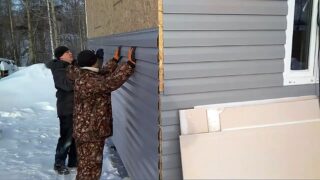
It is better to sheathe the house with siding not in winter, but in summer for the following reasons:
- Long daylight hours - you can do more without resorting to electric lighting;
- in the warm season it is easier to work, since there is no need to resort to special techniques or to preheat the materials;
- there are no cold strong winds, which create great difficulties when sheathing;
- during installation, additional restrictions do not need to be observed, so that in the future, with a positive temperature change, the siding does not warp.
In principle, it is possible to finish the facade in winter. Most modern materials can be installed at temperatures below freezing. However, this option is in any case much more expensive.
The situation when you can decorate a house only in winter is not so rare. Construction is a complex, multi-stage process. If there is a delay at some stage, the timing of all the others also changes. Sometimes it turns out that you need to move into the house urgently, and the external finishing work is not completed.
However, the winter installation also has its advantages.
- If the facade is sheathed with Canadian siding, the installation time does not really matter. This material is designed and manufactured to withstand extreme cold. It can be installed at -10 or even -15 ° C.
- Plastic siding is not as frost-resistant as, for example, metal siding. Its laying is carried out at -5 ° С. However, for mid and southern latitudes, such winter temperatures are not uncommon.
- In summer, the demand for facing works is very high, which allows companies to raise the price. In winter, decoration is rarely resorted to, so the trim of the house is determined at a discount of up to 40% or more.
- Installation, most likely, will be carried out in a short time and without "rush jobs". As a result, it may take less time than in summer, despite the short daylight hours.
However, when installing siding in winter, you must follow the rules. Usually they are indicated in the instructions for the lining.
In what cases it is impossible to mount the cladding in the cold season

No matter how high-quality the finishing material is, there are circumstances in which installation is strictly prohibited.
- During heavy snowfall or rain, the cladding must not be installed. In such conditions, it is difficult to properly fix the material. Although moisture alone does not affect the condition of vinyl or metal panels and steel framing too much, the work is difficult to carry out. Also, in such conditions, it is prohibited to carry out insulation.
- For the installation of siding on the facade, the temperature in winter is critical. However, this figure depends on the material. Vinyl siding becomes brittle at temperatures below -5 ° C. It becomes extremely difficult to cut or fasten it, as it breaks easily and gives cracks. Acrylic is somewhat more stable - it can be placed at temperatures down to -15 ° C.
- Metal siding has little or no effect on user performance at sub-zero temperatures. However, the installation conditions already matter here.It is impossible to work in frost with metal that perfectly conducts heat. And the manufacturer will not allow fiber cement siding to be installed at temperatures below + 1 ° C. With all its advantages, this material becomes even more brittle in cold weather than vinyl plastic. At the same time, the weight of the concrete slats is much higher, which makes the installation extremely difficult.
- When walls are iced up, trimming them is a waste of time and money. When the ice crust melts, moisture will penetrate into the insulation through the waterproofing or accumulate on the back of the finish. This will lead to irreversible damage to the heat insulator, sheathing.
- It is impossible to mount the sheathing in strong winds. The lamellas are quite long. At the same time, the thickness of the metal or plastic is small, the panel bends under the influence of the wind and under the weight of its own weight.
The weather conditions are different in different climatic regions. In southern latitudes, winter is not an obstacle for installation, since the air temperature here rarely drops below -5 ° С. But even in this case, it is better to sheathe the house on a fine sunny day.
What siding to choose for finishing a house in winter

For cladding, they choose practical, reliable and beautiful siding. Whether it can be installed in winter depends on the weather and the material of the lamellas.
Canadian facade siding has the least restrictions. Contrary to popular belief, it is better not to finish with wood panels in winter. The tree changes greatly in volume under the influence of cold and moisture.
Features of work in the winter
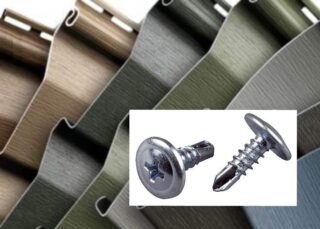
When sheathing a house in winter, the following rules must be followed.
- Carry out finishing work within the permitted temperature. The difference of 2 degrees seems to be unimportant to many, but for siding it can be significant.
- You need to store siding in an insulated shed or room where the temperature does not drop below the recommended level. In this case, the "addiction" of the material is not carried out. On the contrary, the material is transferred to the site in small portions. Thus, hypothermia is avoided, in which the lamellas become brittle.
- If the material was left in a heated room at temperatures above + 15 ° C, the siding should first be transferred to the garage, kept for at least 2-3 hours to cool, and only then taken out into the cold.
- Leave the siding only on a flat surface. Even at 0 ° C, the brittleness of the material increases and it becomes too easy to damage it.
- It is recommended to transfer lamellas or panels in three to distribute the weight as evenly as possible and prevent siding from sagging.
- For fixing the finish, use ordinary self-tapping screws. However, the material is recorded taking into account winter conditions. The sheathing is never fixed tightly. Any material - wood, metal, acrylic, changes in volume when the temperature changes. The magnitude of the change depends on the coefficient of thermal expansion. The difference between wall, frame and finish can be quite significant. Therefore, when fastening, a technical gap remains between the screw head and the lamella - for expansion. In winter, the recommended gap reaches 10–12 mm versus 5–6 mm in summer.
- You need to use a hammer very carefully, not forgetting about the increased fragility of the material.
- To cut the siding, take a saw with fine teeth. It is better to cut the material in a garage or other outbuilding, and not outdoors at low temperatures.
- The same goes for additional elements such as door and window openings. It is impossible to cut a profile in the cold. Therefore, at first, all openings are carefully measured, and the cutting is performed in the garage or shed.
- Do not use sealant for joining lamellas or panels. Liquid plastic and glue are taken only if required by the manufacturer. At the same time, attention is paid to the frost resistance of the composition.
Safety recommendations should also be followed. You need to carry out work in protective warm gloves, having warm shoes with soft soles on your feet.
Description of the workflow

Works in winter and summer are carried out according to the same scheme. The instruction is standard.
- Prepare the walls, cleaning them from debris, old finishes. If there are cracks or dents, they are repaired.
- Lay a vapor barrier membrane under the frame.
- A wooden or metal frame is mounted. The latter is preferable, as it is stronger and more durable.
- Insulation is placed in the cavities between the uprights.
- Cover the heat insulator with a waterproofing membrane. It is better if the film will simultaneously act as a windscreen.
- A counter-lattice is mounted on top of the waterproofing, if it is a wooden frame. Metallic is calculated in such a way that the insulation does not go beyond the plane of the frame, leaving an air gap.
- They put the finishing bar at the level from which the facade finishing begins.
- Fastening corner elements, window and door profiles. Usually, the finish line is set immediately.
- The lamellas start from the bottom, the panels - from the bottom and left. Fix with self-tapping screws on the profile.
- The next element is inserted into the groove of the previous one until it clicks and fastened in the same way.
- The last lamella is inserted into the groove of the previous section and into the finishing strip. Sometimes for this you have to cut the lamella in width.
Installation is fast. But in order to ensure this speed, it is necessary to carefully check it with a level and a plumb line during installation of the frame.
Possible installation difficulties
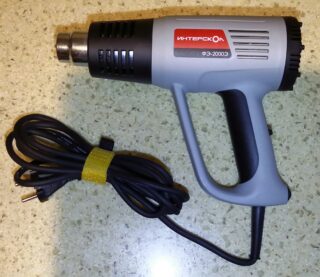
Difficulties when laying in winter arise quite often and are associated with additional restrictions.
- Siding should not be left outside if the forecast promises a cold snap, rain or snow. At the same time, leaving it in a heated living space is also not a good idea. The material should not be exposed to large temperature differences.
- When trimming parts right during installation, a building hair dryer is used to warm up the material. However, this technique is allowed only with a small amount of work.
- It is better to leave siding under a canopy or cover it with a tarpaulin during operation.
In case of precipitation, work is immediately stopped. If possible, cover the area with foil or put up a canopy.


